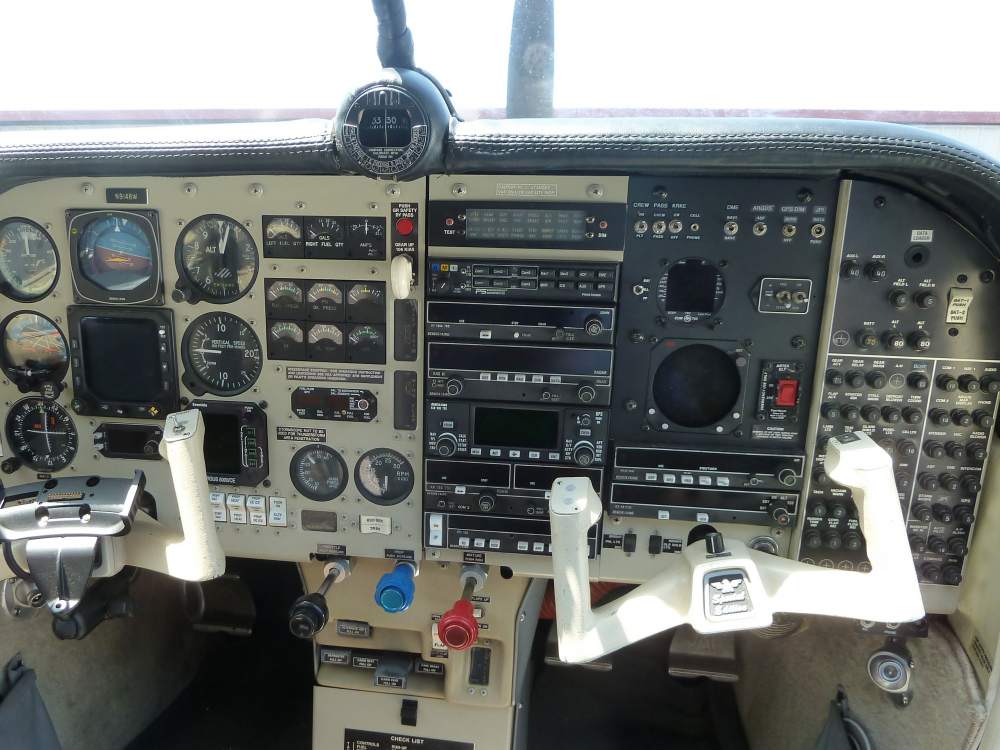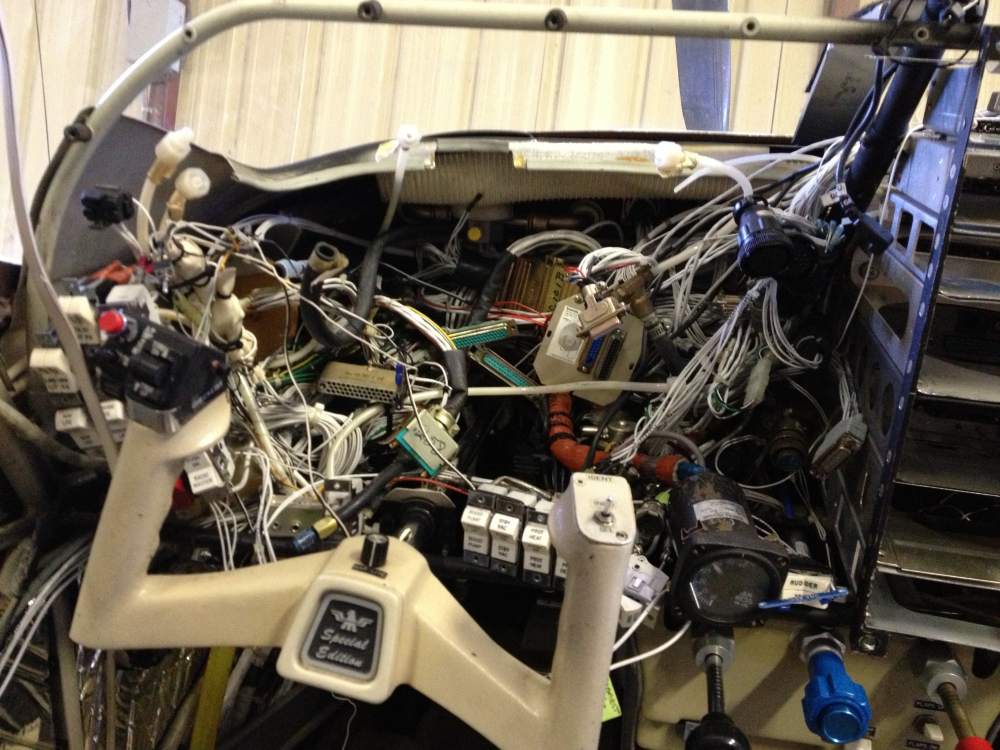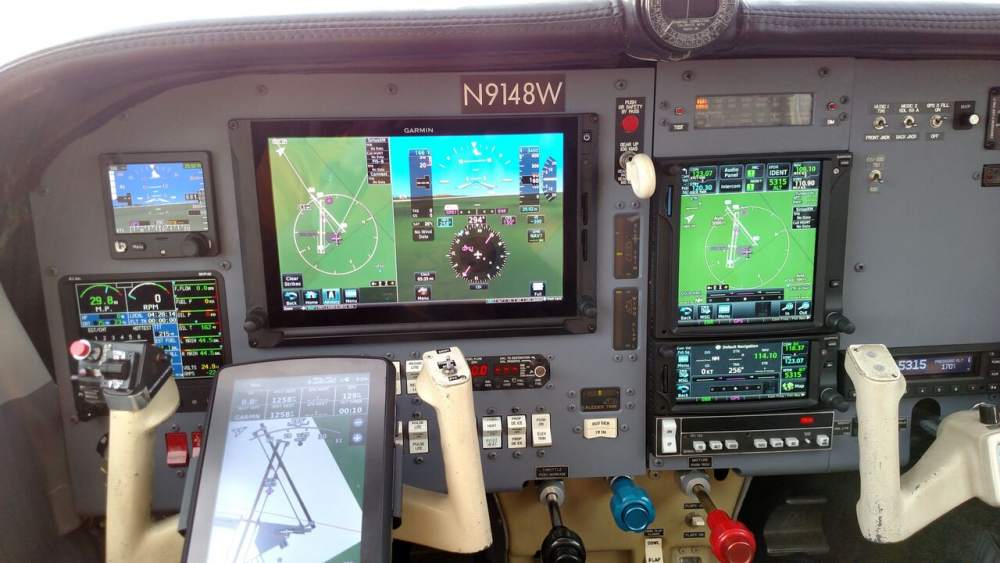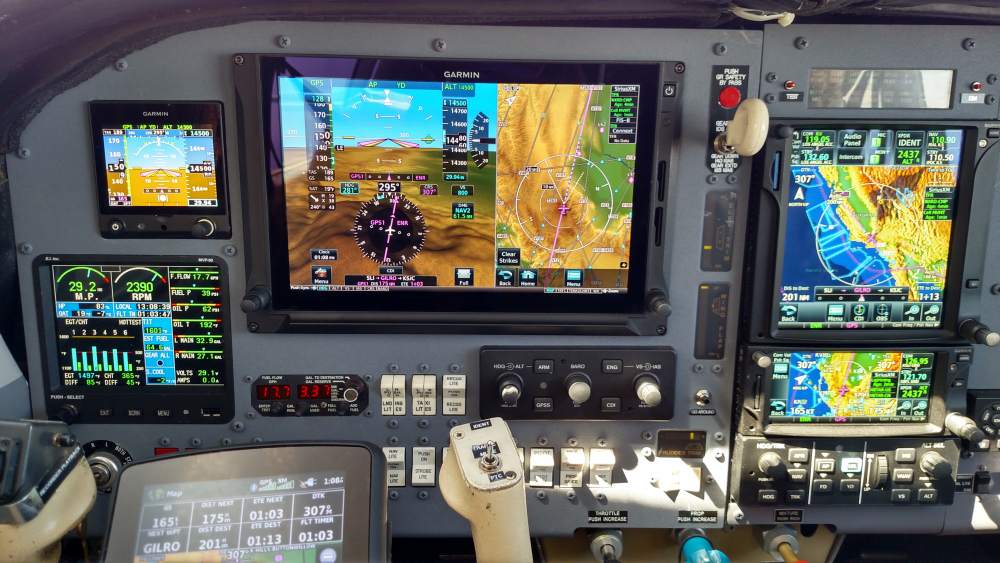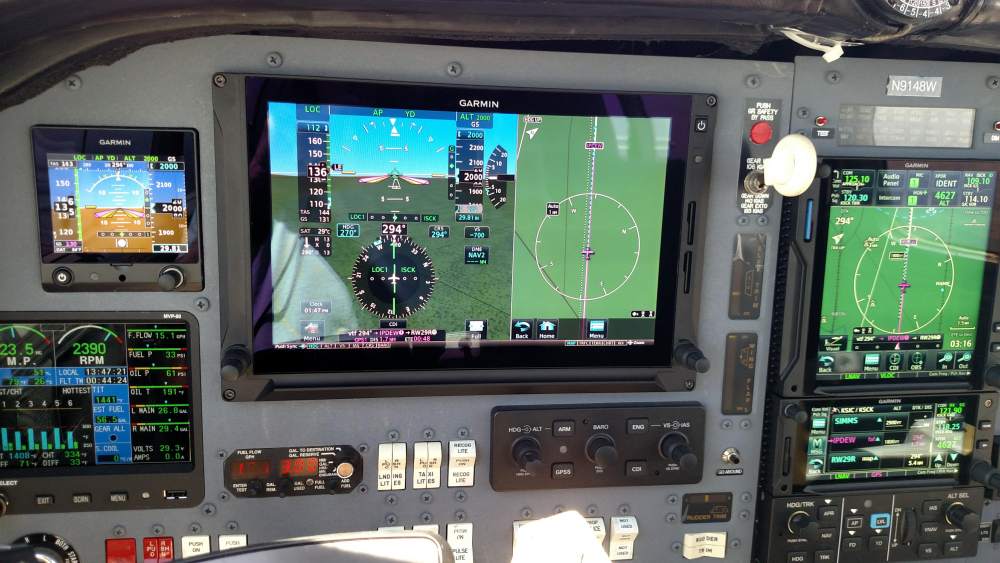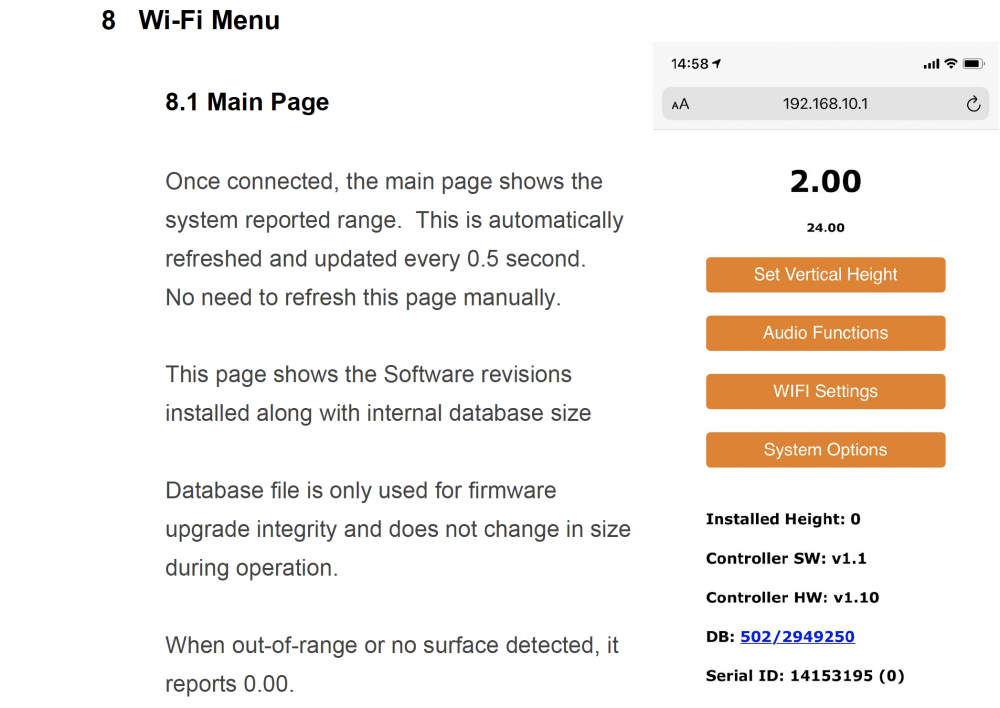-
Posts
2,737 -
Joined
-
Last visited
-
Days Won
38
Content Type
Profiles
Forums
Blogs
Gallery
Downloads
Events
Store
Everything posted by donkaye, MCFI
-

Before-During-After Panel Upgrade Thread
donkaye, MCFI replied to 0TreeLemur's topic in Avionics/Panel Discussion
I wish he weren't in Texas so it maybe could be done without removing the yokes. That's a big job that doesn't buy me any new capability. Convince me otherwise. -

Before-During-After Panel Upgrade Thread
donkaye, MCFI replied to 0TreeLemur's topic in Avionics/Panel Discussion
Thanks. When I thought about doing everything imaginable in the way of avionics with the Bravo and loving the Mooney in general and its speeds versus buying a turboprop or jet without all the new innovations (although the Epic has been tempting), the decision was not difficult given the type of flying I do. -

Before-During-After Panel Upgrade Thread
donkaye, MCFI replied to 0TreeLemur's topic in Avionics/Panel Discussion
I had owned my airplane for 21 years before I started my upgrade journey. I thought it was a one time effort. It was not. It started in 2013 and continues to this day. So far there have been 5 major iterations and numerous small ones, each with a good reason. There will probably be more as other new technology comes online. For those interested here is the order: 1. G500, GTN 750/650, GMA35. GTS 800, GDL 88, GTX 330ES, ESI 2000, GDL 69A, WX 500, MVP-50. 2. G500TXI, ESI 500, GTX 335, FS 210, Alpha Systems AOA. 3. GCU 485 Controller required a panel change. 4. GFC 500, G5. 5. GTN Xi 750/650. 6. Aera 760, Landing Height System. -
I'm using a 5 Amp circuit breaker switch with a 1 amp inline fuse.
-
You won't get the full benefit of the GFC 500 unless you get a GTN. With the GTN you get multiple step down VNAV. You also get airways and some other niceties over what you have now. I'm quite happy with the G5 as a backup, but you won't get the SVT and Flight Path Marker that can be included with the GI275. To get everything you have to pay the price. However, anyway you look at it, somehow fit in the GFC 500 and GTN. On long cross countries you will really appreciate them. I had the KFC 150 for 26 years and it is a capable autopilot, but as things go wrong with it (and they will go wrong) in time with at least the servos, you'll be happy you went with the new technology of the GFC 500 both for utility and the lack of the added expenses of KFC repairs. And do spend the extra money for the YD. In turbulence, even in the short body, you will appreciate it.
-

TruTrak Autopilot Pre Order's / Status Update
donkaye, MCFI replied to Jeev's topic in Avionics/Panel Discussion
That's a good bid if it includes both the GAD29B and the G5. For just a little more money I'd add the 4th servo. To get the most benefit from it, though, you need either the GTN 650 or 750. -
I spent my early youth growing up in Cleveland delivering the Cleveland Plain Dealer in -2° temperatures. I thought it was normal. I remember in the middle of winter watching live television showing summerlike weather in California. I didn't know that several years later I would be living in year round sunny Southern California. As much as I dislike California for so many reasons, the unbelievable weather keeps me and many other "would rather live somewhere else" people staying here. I don't miss the cold, snowy weather one bit. It is pretty to look at, though.
-
For both the Chandelle and Lazy Eight the maneuvers should start at 110 knots. The minimum airspeeds for both maneuvers should be 70 knots. For the Chandelle the speed at the 90° point should be 90 knots decreasing to 70 knots at the 180° point. For the Lazy Eight 90 knots should be reached at the 45° and the 135° points with 70 knots at the 90° point. For a constant speed prop as is on the Mooney no increase in power is required as you begin the climb in the Chandelle. (See Chapter 9-6 in the Airplane flying Manual, FAA-H-8083-3B). As Kirschner said in his book, the Chandelle is a "Bank and Yank" maneuver and the Lazy Eight is a "Yank and Bank maneuver". That was to get your attention. Of course, we know that the maneuvers should be flown smoothly. Both are fun maneuvers.
-
Can you point me to the source? I was not aware of this and, if true, wonder if the G5 does the same thing with a GMU 11.
-
Whoa there. I must be missing something in the above. Are you saying that you think the TXI with its GMU 44 and the GI 275 with its GMU 11 sync together at the same time?
-
Same thing as the G5. I chose not to install the GMU 11. because during normal flight operations there would be a difference between the GMU 11 of the G5 and the GMU 44 of the TXI. For the rare time that the TXi failed track would be adequate to run an approach and get on the ground.
-
I have found that people have very strong opinions on locking or unlocking of the baggage door. Since each position has a valid support position, I don't try to change anyone's mind over right or wrong on this matter. Since I have more control over transitioning students, I will state both positions as clearly as I can, and then recommend my position, which favors ease of entry to first responders.
-

COVID 19 Vaccination Discussion
donkaye, MCFI replied to Ross Statham's topic in General Mooney Talk
Out of curiosity for the doctors on board, how is the effectiveness of a vaccine determined without exposing the volunteers to the actual virus? -

COVID 19 Vaccination Discussion
donkaye, MCFI replied to Ross Statham's topic in General Mooney Talk
We had our 1st Moderna shot on Tuesday. We had to wait on the phone for nearly 3 hours to get the appointment. It's been over 2 days now and just the same arm soreness reported above. It's a little worse than the flu shot, but not by much. The next shot is in 4 weeks, and after hearing of some of the side effects both above and from some friends, we have some apprehension but will complete the process. The positive is that I expect to get back to flight instructing full time again a couple of weeks after the second shot to let immunity build up, of course still using a mask, and a lot of hand sanitizer. Unless you're teaching in a 747, social distancing is not in the cards. Edited 2/9/2021: After 1 week swelling, redness, and itching developed. This continued for a week and has subsided over the past few days. Still a little redness. -
I don't think that is something you should worry about. If that were a problem, it would be a big problem for the G1000 and the 530/430. In all my teaching there were only one or two 430s that had a problem with a Comm or Nav button and never with the "Direct To" button. I've seen more problems with "washed out" screens on 530/430s and G1000s. Although really inefficient you could push a "Direct To" flight plan to the GTN with the help of a FS 510 / FS 210.
-
Teaching how TO porpoise should not be taught. Teaching how NOT to porpoise can be taught. Don't release the back pressure on the yoke after landing. In fact continue to add more back pressure and start applying brakes at about ½ the touchdown speed increasingly adding more brake pressure with full up elevator until you come to a stop. Up elevator assists by adding drag. If you landed fast and bounce, if there is enough runway left, add some power to cushion the next landing, or go around.
-
JPI has good products, but I just flew a Bravo from Minden to Napa that had the EDM 900. I would need a magnifying glass to see some of the numbers. Very uncomfortable for me trying to read them compared to the larger numbers of the MVP 50.
-
As such, I flew today with the updated audio file, and the volume call outs between altitude and gear check are the same now. Thanks, Nidal!
-
Nidal, Although I followed the instructions and my unit works perfectly, please explain what the 2 and 24 mean on the below page and when numbers should appear in those positions. It's not clear to me from the manual even though I think I know what they mean. Thank you.
-

"Bare Minimal" Required Garmin Databases
donkaye, MCFI replied to MisfitSELF's topic in Avionics/Panel Discussion
Unfortunately, not at Jeppesen. They used to charge about $62 to add a handheld like the 796 to an iPad full country subscription. I thought that was a good deal. I called them recently to change the 796 to the 760 and they told me it would be $751. Since I already had an invoice for the previous amount, they summarily cancelled it, and said they had been making a mistake on the invoice for several years. I had no ideal and obviously shouldn't have made that call. Even for me that was outrages. No way that much for a handheld. I canceled the 796 subscription, so they ultimately lost money on the deal. -
I updated the audio file today and it works perfectly on the ground. I'll test it in the air tomorrow or the first nice day we have here.
-

"Bare Minimal" Required Garmin Databases
donkaye, MCFI replied to MisfitSELF's topic in Avionics/Panel Discussion
That depends. If you have the G500 TXi, the GTN 750Xi, the GTN 650Xi, a handheld like the 796 or 760, and use Garmin Pilot with IFR Charts, it's an outstanding deal. -
My installation was completed yesterday afternoon. With the resourcefulness I have come to expect from Peter Casares at J & R he was able to provide a separate On/Off switch and circuit breaker without removing the glareshield or changing any wiring to the already full inputs to the GMA 35c. The calibration couldn't have been easier. It took maybe 10 minutes at most. I then went flying to test it out. As expected, it worked as indicated. The callouts as demonstrated in the videos were at 100', 70', Check gear down, 50', 20', 10', 5', 2', 1'. The volume on the "Check gear down" was less than the altitude callouts, and when back on the ground I had to increase the volume. I called Nidal to discuss this, and he was already aware of it. I'd say within 5 minutes he sent me a file to correct the issue. How's that for customer service? All units being shipped in the future will have the new file. He indicated to me that a couple of people had backed out of the unit because of the delay. Up front he said when to expect deliveries to start, so it seems to me to be on schedule. I'd recommend to those that backed out that they give Nidal a call and get back on the schedule. If you wanted it before, my opinion is you'll be happy with the results.
-
The connector with a small length of each wire attached is included, but since the run length from the unit to the audio panel is different for each airplane, a cable extension is necessary. My tech conscientiously made that extension, so there would be no issues with it in the future. That takes time to do it right.



